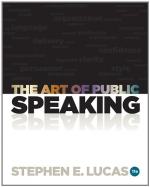—JOSEPH ADDISON, The Tattler.
Poe said that “the tone of beauty is sadness,” but he was evidently thinking from cause to effect, not contrariwise, for sadness is rarely a producer of beauty—that is peculiarly the province of joy.
The exquisite beauty of a sunset is not exhilarating but tends to a sort of melancholy that is not far from delight The haunting beauty of deep, quiet music holds more than a tinge of sadness. The lovely minor cadences of bird song at twilight are almost depressing.
The reason we are affected to sadness by certain forms of placid beauty is twofold: movement is stimulating and joy-producing, while quietude leads to reflection, and reflection in turn often brings out the tone of regretful longing for that which is past; secondly, quiet beauty produces a vague aspiration for the relatively unattainable, yet does not stimulate to the tremendous effort necessary to make the dimly desired state or object ours.
We must distinguish, for these reasons, between the sadness of beauty and the joy of beauty. True, joy is a deep, inner thing and takes in much more than the idea of bounding, sanguine spirits, for it includes a certain active contentedness of heart. In this chapter, however the word will have its optimistic, exuberant connotation—we are thinking now of vivid, bright-eyed, laughing joy.
Musical, joyous tones constitute voice charm, a subtle magnetism that is delightfully contagious. Now it might seem to the desultory reader that to take the lancet and cut into this alluring voice quality would be to dissect a butterfly wing and so destroy its charm. Yet how can we induce an effect if we are not certain as to the cause?
Nasal Resonance Produces the Bell-tones of the Voice
The tone passages of the nose must be kept entirely free for the bright tones of voice—and after our warning in the preceding chapter you will not confuse what is popularly and erroneously called a “nasal” tone with the true nasal quality, which is so well illustrated by the voice work of trained French singers and speakers.
To develop nasal resonance sing the following, dwelling as long as possible on the ng sounds. Pitch the voice in the nasal cavity. Practise both in high and low registers, and develop range—with brightness.
Sing-song. Ding-dong. Hong-kong. Long-thong.
Practise in the falsetto voice develops a bright quality in the normal speaking-voice. Try the following, and any other selections you choose, in a falsetto voice. A man’s falsetto voice is extremely high and womanish, so men should not practise in falsetto after the exercise becomes tiresome.
She perfectly scorned the
best of his clan, and declared the
ninth of any man, a perfectly
vulgar fraction.
The actress Mary Anderson asked the poet Longfellow what she could do to improve her voice. He replied, “Read aloud daily, joyous, lyric poetry.”




